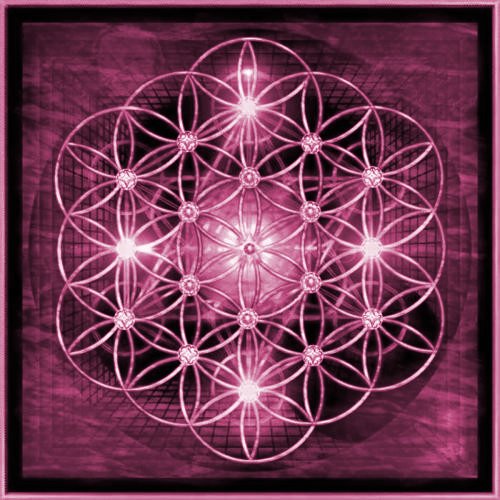 |
SPIRIT
LODGE
LIBRARY
Main
Information
Page
29
|
(Main
Links of the site are right at the bottom of the page)
The 37 pages in this Main Information section are below.
The Soul ... Inuit & Salish
By Cinnamon Moon
From: Encyclopedia of Native American Religions
Soul:
According to the traditional beliefs of many native peoples
in North America, individuals have at least two souls; however,
traditional Pueblos believe in a unitary soul, and among the
Yuchi and Sioux tribes there is a belief in four souls. Every
healthy individual has one soul linked to breath and life that
dies with the body and another, called a free soul, that leaves
the body in dreams or vision states, often traveling to distant
places and on occasion visiting the land of the dead. Disease,
even deaths may be caused by the loss of the free soul, which
may have wandered off or may have been carried away by malevolent
spirits, especially those of the dead. A shaman goes into a
trance and sends his or her soul to retrieve the runaway soul.
Sometimes, shamans face the opposition of the dead and must
battle for the soul with the inhabitants of the other world.
Shamans also guide souls of the deceased to the land of the
dead. Indians also believe that "inanimate" objects
(stones, plants and so forth) and animals have souls. Tribes
picture the afterworld to which the souls of the deceased journey
in different ways, according to their own surroundings and experience.
There are detailed descriptions of the land of the dead among
almost all American tribes. Usually, the land of the dead is
the reverse of the land of the living with day and night and
seasons reversed. The dead live very much as they had while
alive-eating, dressing, playing, and living in dwellings as
during their previous existence.
Soul/Inuit:
In general, traditional Inuits believe that each person has
more than one soul. Some count three: one, an immortal spirit
that leaves a person's body at death and goes to live in the
spirit world; one, the breath of spirit of life, a soul ceases
to exist at death; and one that abides in a person's name (the
Name-Soul) and persists after death and is reincarnated through
the custom of naming babies after relatives who have recently
died. An essential aspect of a person is therefore reborn in
the next generation through these newborn children who receive
both the name and with it the soul of the recently deceased
person. For Inuits and Aleuts, the name provides the child with
strength to survive infancy. For Inuits of central and eastern
Artic areas, it provides a person with a guardian spirit during
life. Inuits believe souls reside in human beings, animals and
inanimate objects and can change into other forms, such as demonic
spirits. For humans and non-humans, the soul remains in the
vicinity of the body for a specified time after death before
going to another world to await rebirth. The nature of this
otherworld varies from group to group. The Inuit generally believe
that the destination of the soul after death depends partly
on how the person dies. Souls are invisible except to certain
shamans, and they have the power to come and go from the body
while the latter is alive during sleep, trance or coma. The
departed souls of people and animals have the power to influence
other souls, therefore they can affect the game supply.
Soul Recovery Ceremony/Coast
Salish:
Also called the spirit canoe ceremony, this elaborate rite,
which differs from group to group, is held during the winter
at night in a plank house. The ceremony is enacted to recover
a lost soul and includes singing, drumming, feasting, speech
making and gift giving and is officiated by several shamans
acting together. They travel to and from the land of the dead,
with other tribal members helping
them in thought and song. The ritual is intended to cure someone
who is wasting away, a sign that an invisible part of a patient,
the free soul, has been taken away by ghosts to the land of
the dead to await his or her final demise. The soul stolen by
the dead can only be recaptured through an elaborate ceremony
that involves combat with the dead for the possession of the
soul.
This ceremony is one of the few
occasions where a group of shamans, usually rivals, cooperate
with each other for the good of the patient and the community.
The doctor's paraphernalia includes painted plank, poles and
small cedar carvings that represent immortals who make the journey
to the world of the dead and give the shamans the power to go
along. The shaman's journey involves stops to hunt, fish, pick
berries and collect resources on a vehicle fitted for water,
meadows or mountain travel. Eventually, they reach the land
of the dead, recover the soul and fight off ghosts. The doctors
return, bringing the soul back to the patient.
The ceremony commemorates an ancient
enactment of a collective shamanic boat journey to the land
of the dead. The Salish spirit canoe of old retraced the voyage
of the deceased person's soul, for in the past the dead were
buried in the southern Coast Salish area in a canoe that journeyed
to the other world.
|
|
|
|
|
|
|
|
|
|
|
|
Libraries
are on this row
|
|
|
INDEX
Page 3
(Main Section, Medicine Wheel, Native Languages &
Nations, Symbology)
|
|
INDEX
Page 5
(Sacred Feminine & Masculine, Stones & Minerals)
|
|
|
|
|
|
|
©
Copyright: Cinnamon Moon & River WildFire Moon (Founders.)
2000-date
All rights reserved.
Site
constructed by Dragonfly
Dezignz 1998-date
|
|